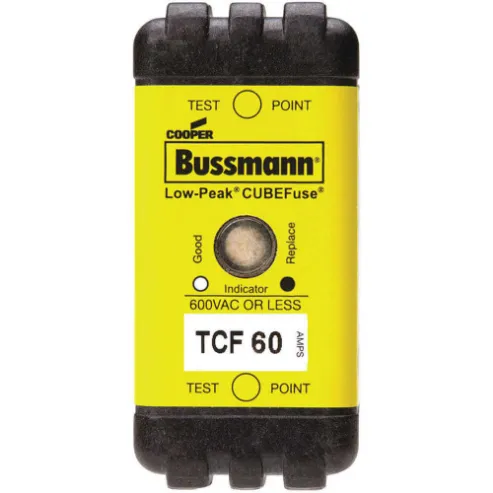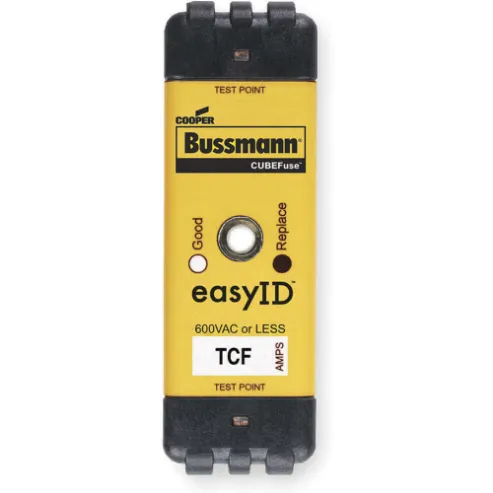Bussmann TCF40 fuse is ideal to withstand temporary inrush currents without immediate tripping, preventing unwarranted disconnections during motor and equipment startups. This time-delay UL Class CF fuse, also known as slow-blow Class CF fuse, triggers open circuits when subjected to prolonged loads or short circuits, ensuring effective disconnection for sustained protection.
Features:
- It has a plastic body offering high insulation and mechanical strength for dependable use.
- This dual-element fuse offers plug-in installation, ensuring secure and straightforward fuse placement.
- It has interrupt current ratings of 100kA at 300VDC and 300kA at 600VAC, providing comprehensive circuit protection.
- This fuse has indicating capabilities, offering real-time visual feedback on the fuse's operational status.
- It incorporates a time delay speed, providing controlled response and protection in specific operational scenarios.
Compatible Accessories:
- Bussmann TCFH100N Fuse Block: This finger-safe fuse block is used with 600VAC UL Class J fuses. It can be easily snapped onto a 35 mm DIN rail and may additionally feature bolt holes for panel mounting.
Frequently Asked Questions:
Q. What tool is employed to test a fuse?
A. Although visually inspecting a glass fuse's element for signs of blowing is straightforward, most fuses come with opaque bodies that obscure the element. To determine if a fuse is blown, a multimeter is necessary. When appropriately set up, the multimeter can gauge the resistance of the fuse element.
Q. How does a fuse differ from a breaker?
A. Fuses and circuit breakers both serve the purpose of interrupting the electrical flow, yet they employ distinct mechanisms. A fuse consists of a metal element that melts from excessive heat. Conversely, a circuit breaker utilises a switch mechanism that triggers on detecting an electrical overload.
Q. What are the factors to consider while installing this Bussmann TCF40 fuse?
A. Ensure that proper torque is applied when making terminal connections to prevent loose or overheated connections. Assess the ambient temperature, level of vibration and vulnerability to moisture, which can affect the fuse block's operational effectiveness
 Change Country
Change Country



 In Stock : 53 Units
In Stock : 53 Units


